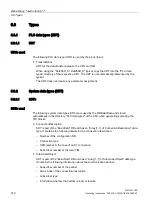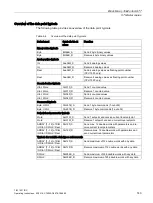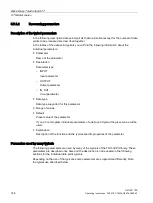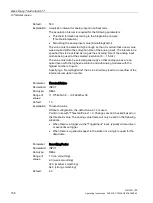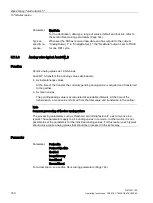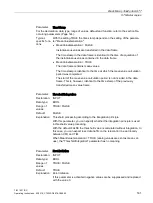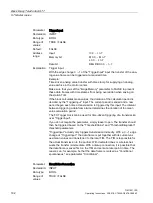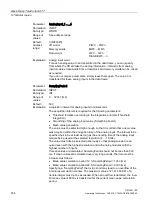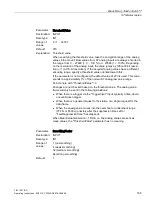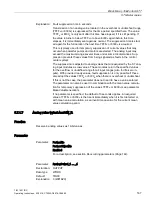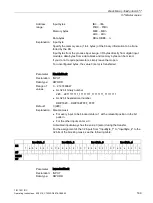
Block library TeleControl ST7
5.7 Master copies
TIM 1531 IRC
154
Operating Instructions, 02/2018, C79000-G8976-C468-02
Explanation:
Receive new data
The NewData output is intended for user-specific further processing, for ex-
ample to react in a specific way to receipt of new data.
Whenever the block has received new data and has output it to the outputs for
the specific typical, NewData is set to TRUE for one OB1 cycle.
You will find the specific outputs in the description of the individual data point
typicals.
With the data point typicals "Set01W_R" and "Par12D_R", NewData is also set
to TRUE for one OB1 cycle if there is a new local value entered in the Lo-
cal = 1 state.
If you do not require the parameter, simply leave it open.
5.7.1.3
Time stamp
Format of the SINAUT time stamp
For many data point typicals you can use the TimeStamp parameter to instruct that the data
of the object should be transferred with a time stamp.
However for the receiving data point typicals there is no output parameter with which to
output the received time stamp. The time stamp is only saved in the instance DB which you
have specified when calling the respective receive typical. To further process the time stamp,
the data must be read out of the DB by the user program.
The time stamp is saved in two data double words that have the same name in all object
DBs:
Name of the double word
Contents
RecTimeStamp_1
Year, month, day and hour
RecTimeStamp_2
Minute, second, millisecond and time status
With the exception of the half byte with the time status, the date and time are coded in BCD
format.
Table 5- 5
Assignment of the structure of the time stamp
Name of the double
word
Byte no. Contents
High nibble
Low nibble
RecTimeStamp_1
0
Year * 10
Year * 1
1
Month * 10
Month * 1
2
Day * 10
Day * 1
3
Hour * 10
Hour * 1
RecTimeStamp_2
0
Minute * 10
Minute * 1
1
Second * 10
Second * 1
2
Millisecond * 100
Millisecond * 10
3
Millisecond * 1
Time status

